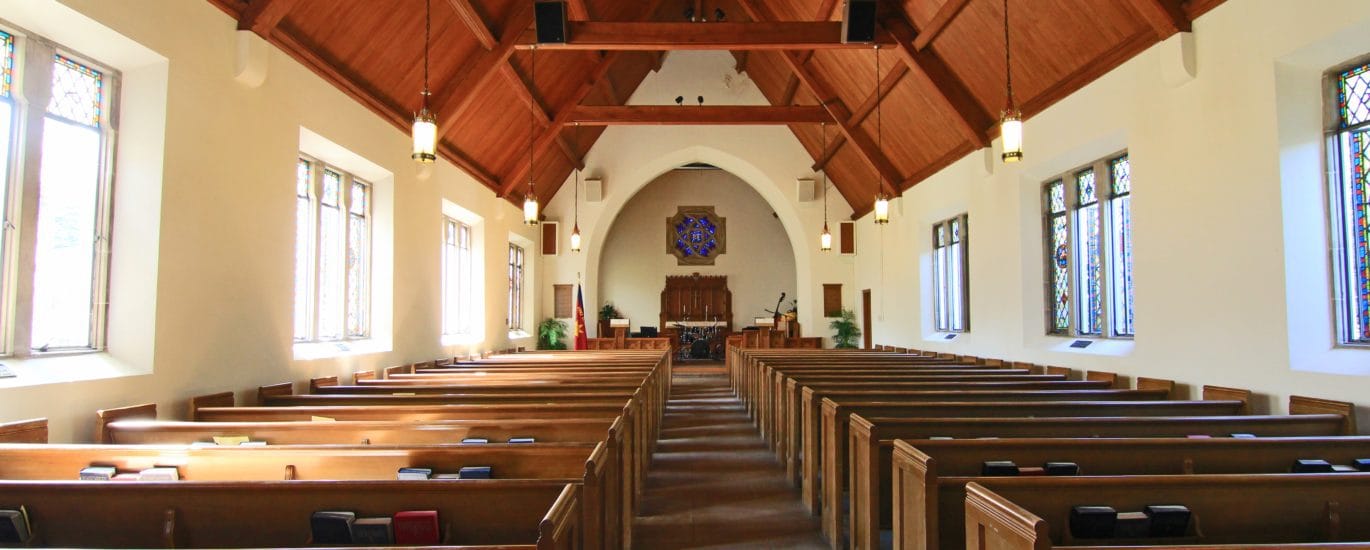by Greg Dover
“Depending on who you ask, it’s either a major asset or an albatross around our neck.”
The comment came from a member of the search committee as we toured the church’s facilities during my second interview. Augusta Heights owned 4.1 acres of real estate, with buildings constructed throughout the 1950s and 1960s, totaling over 55,000 square feet, including a 1000-seat sanctuary. And they had an average Sunday attendance of about 50.
My guess is, this is not an unfamiliar scenario for many of you. Even if you haven’t experienced it, you probably know congregations that have. Many churches across the nation are facing similar challenges: (too) large buildings and (too) much property for smaller congregations—at least smaller than those for which they were originally intended. These buildings were envisioned and constructed by faithful people, supported by their faithful giving, meant to be an expression of their faith in the local church and its mission. But with changing church dynamics and cultural demographics, the gift of such space (and spaces) from past generations is more of a burden than a blessing. Leaky roofs, lights that won’t light, inaccessible restrooms, unreliable HVAC, and environmentally “unfriendly” (hazardous?) materials require money, time, energy, and attention to repair, renovate, and remediate—resources then unavailable for the work to which the Church is called.
As Augusta Heights steadily grew from an average attendance of 50 to 100 to 150, the conversation that began with the search committee grew, too. We had new members and a larger budget, but we knew we could not sustain the amount of space we had. These spaces were built for a church in a very specific era, for a very specific purpose, to be used at a very specific time (Sundays and Wednesdays) by a very specific community of people. We needed facilities that actually facilitated ministry. And we realized that perhaps the best way to honor the gifts and faithfulness of past generations would be to use these buildings and property to start and support a new era in the life of the church.
Over the course of several years, we considered a number of ways to best utilize our buildings, but all of them involved right-sizing our spaces so we could expand our ministries. After feasibility studies and RFQs and learning lots of things from architects and construction companies (for instance, what an RFQ is), we eventually settled on the plan we are now pursuing. In the fall of 2019, the church voted overwhelmingly to sell almost half of our acreage, which includes 30,000 square feet of buildings (even the large sanctuary!), and to renovate the remaining buildings. And this past fall, the church voted unanimously to approve plans for the design, scope, and financing of those renovations.
While I was not fully prepared (I was utterly ignorant) of so much involved in this process, and while it has been—at times—complicated (impossible), involved (all-consuming), and tiring (exhausting), it has also been a needed reminder of God’s calling upon the Church today and always, and a powerful witness to the faithfulness of this particular community of faith at Augusta Heights. And, ultimately, it is and will be a benefit to both the church and the broader community.
We hope to sell the property to developers who can create affordable/workforce housing, which is a desperate need in our city, or since we are located in a food desert to a small grocery store or supermarket. The revenue from the sale—along with our Renew capital campaign (contact me to find out how you can contribute)—will fund renovations to our remaining buildings that we would not be able to do otherwise. These new spaces will be as flexible and multipurpose as possible in order to meet the current and future needs of the church and community. Office space for a small nonprofit or mental health counselors, kitchen and showers and washer/dryer for ministry with families experiencing homelessness, and children’s areas for a preschool serving at-risk children are all new possibilities in our renewed spaces. We hope these renewed buildings will renew our church, too, allowing us to become more nimble in responding to the needs around us and be better equipped to serve our community, and that they will be a witness to God’s call to use and share our resources to better serve others—a testimony to the stewardship of “enough” in a culture that celebrates the constant pursuit of “more.”
Are our churches’ outdated and oversized buildings assets or albatrosses? Well, it not only depends on who you ask but how you view them. When we look at our buildings through the lens of abundance—seeing them not as a drain on our resources but as a resource to be used faithfully for the work of God and in the way of Christ—we are relieved of their burden and free to follow God faithfully into the future, blessing others along the way.

The Rev. Dr. Greg Dover is the Pastor of Augusta Heights Baptist Church in Greenville, SC (the town in which he grew up), where he has served since 2015. Greg is a graduate of Furman University, Wake Forest University’s School of Divinity, and Drew University’s Theological School. He and his wife, Suzy, have two children, and they enjoy drinking coffee, traveling, and spending time with good people.




I never saw the purpose of building large and mega churches. One should aim to fill hearts not seats. Besides, there is community in large and mega churches which generally have to be broke up into small groups for members to make true connections and fellowship.
Church growth isn’t a mark of prosperity and success but lives well lived to God’s glory.
This sounds like a congregation that is facing these vexing problems head-on, which is encouraging. I like the direction they are moving in. The church should never have become so materialistic and allowed itself to become so much a part of our consumeristic mindset. Time to down-size and right-mind-size too.